Table of Contents
Table of Contents
People familiar with the tools for thought, personal knowledge management, and “note-taking” space / twitterverse
If you prefer video, you can jump to a recorded talk of this essay from the May 20223ya Tools for Thought Rocks meetup
The term tools for thought has become a new rallying point over the last few years. People who might otherwise gather around keywords like personal knowledge management (PKM), note-taking, networked thought, computer-supported collaborative work (CSCW), knowledge graphs, or human-computer interaction (HCI), are reframing their work.
There are meetups and research groups and thought leaders and accelerators . But more than anything, people are using the term to describe a new class of software. Tools for thought is now a category tag in the databases of venture capital firms. The phrase appears on the landing page of every hot new knowledge management app:
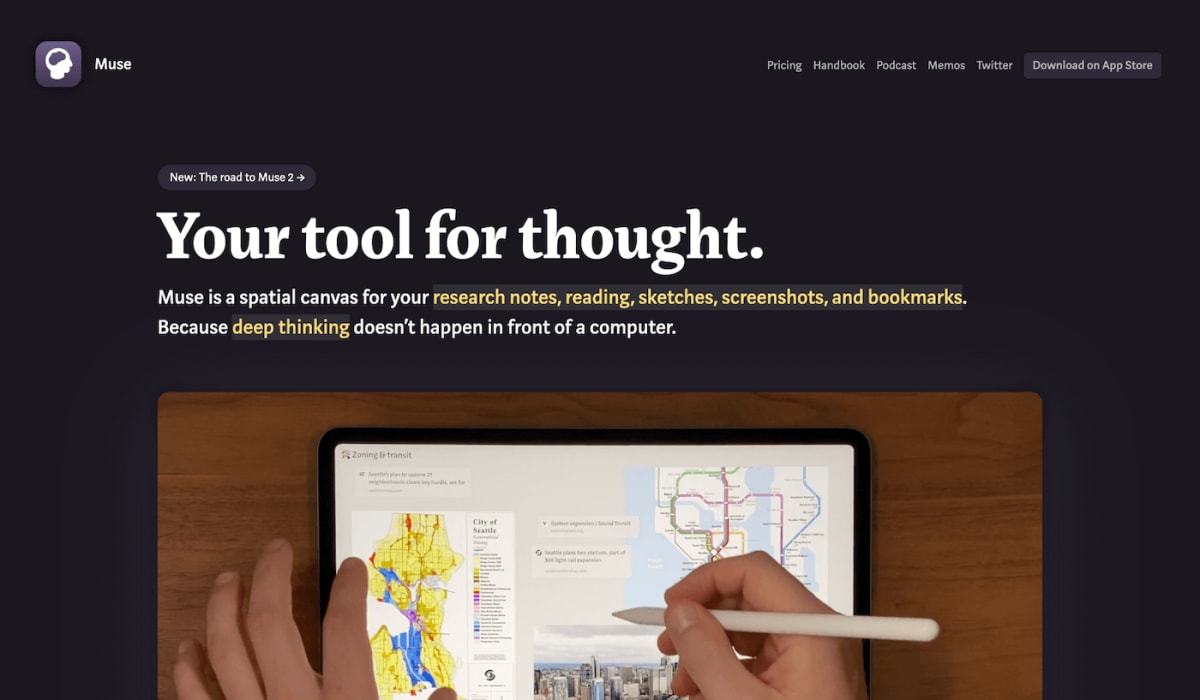
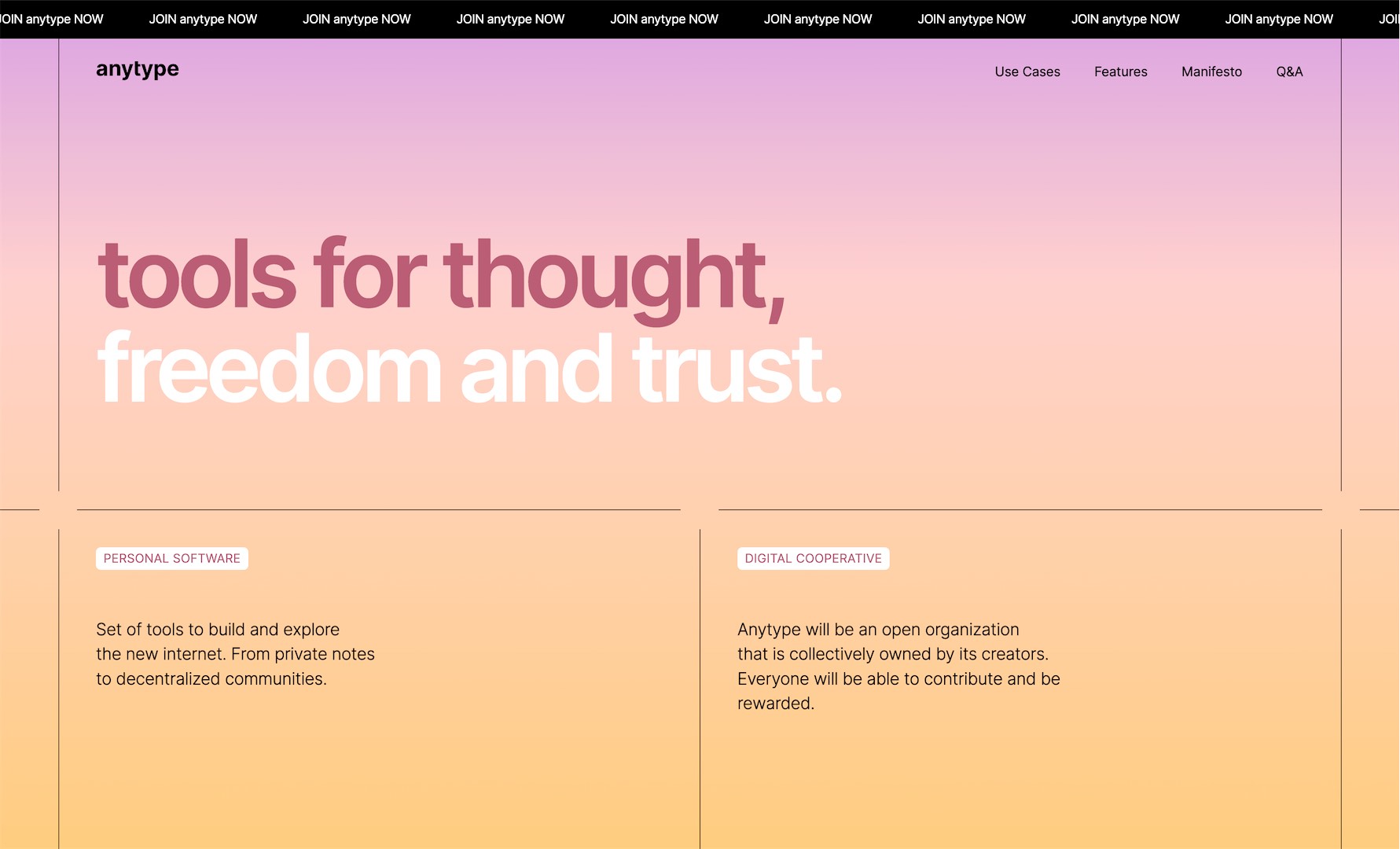
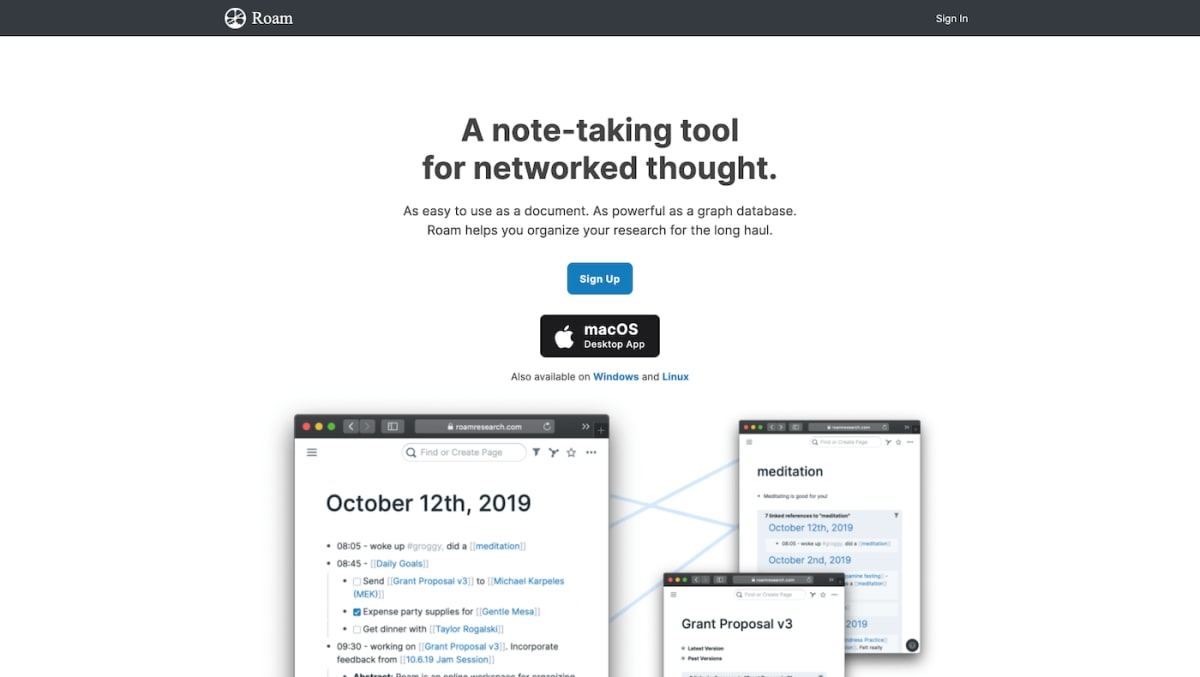
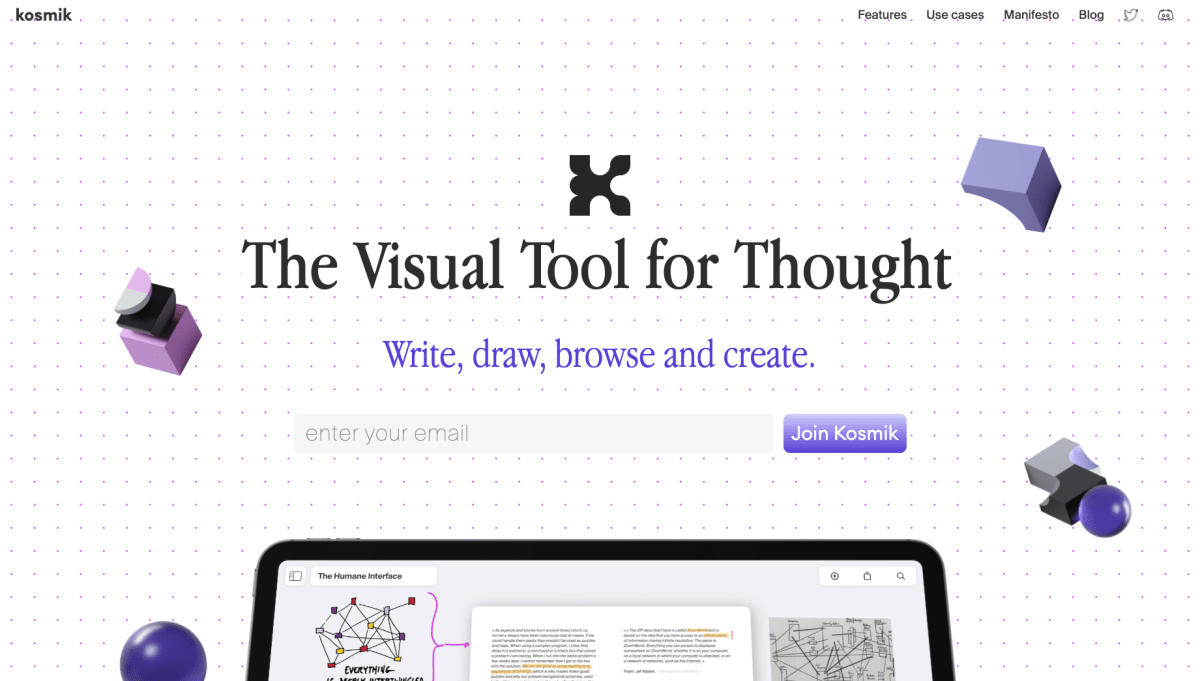
Even when it doesn’t appear verbatim, we can see it in the subtext. These tools are here to help you “think better,” and “achieve more”.


These software apps appear to have a clear vision of what a “tool for thought” is. It appears to involve writing notes, connecting them to one another, exploring dynamic views, and then experiencing a kind of emergent wisdom. An enchanting promise.
Yet there’s something paradoxical here; the phrase itself and the way we’re collectively using it feel misaligned. Taken at face value, the phrase tool for thought doesn’t have the word ‘computer’ or ‘digital’ anywhere in it. It suggests nothing about software systems or interfaces. It’s simply meant to refer to tools that help humans think thoughts; potentially new, different, and better kinds of thoughts than we currently think.
While this might seem like a dumb rhetorical question, what does any of this have to do with computers?
I think it’s a question worth answering explicitly and comprehensively. If only to make clear to ourselves why we currently consider apps that allow you to link notes together the epitome of a tool for thought.
What is a tool for thought?
We’re a bit too early in the establishment of this concept for anyone to have written a canonical definition yet. And like all significantly complex ideas, any proposed ones will be contested and controversial.
We can, however, get a rough estimation by looking at descriptions from some of the key texts we pass around the community. A tool for thought is…
“A context in which the user can have new kinds of thought, thoughts that were formerly impossible for them”
Andy Matuschak & Michael Nielsen – How can we develop transformative tools for thought? (2019)
“A means of increasing the capability of a man to approach a complex problem situation, gain comprehension to suit his particular needs, and to derive solutions to problems.”
Douglas Englebart – Augmenting Human Intellect (1962)
“A truly new medium [where] the very use of it would change the thought patterns of an entire civilization”
Alan Kay – User Interface: A Personal View (1989)
Looking a these, it’s easy to think of plenty of examples from human history of tools for thought that fit the bill. Here’s a brief list:
Written language – 3200 BCE
Hard to overstate this one. Allows us to precisely record and communicate our ideas across vast amounts of time and areas of space. Both to ourselves and to others.

A cuneiform tablet – the earliest form of writing Drawing – ~73,000 years ago
Drawing feels so fundamental it’s hard to think about it as a tool people developed. But at some point, a person painted the first animal on a cave wall. Since then it’s been one of the primary ways we represent thought and communicate meaning through spatial relationships and symbols. It did all the heavy lifting before written language emerged.
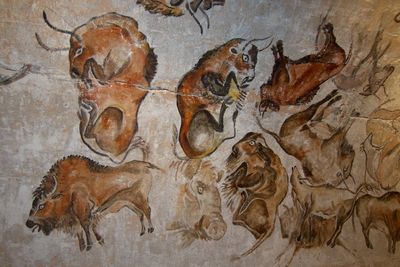
Bison paintings in the Cave of Altamira in Spain Maps – 700 BCE
Visual maps showing routes through landscapes and layouts of cities enabled us to form mental models of physical spaces we had never been to or seen with our own eyes. They shift us from an “egocentric” view of the world to an “allocentric” bird’s eye view. Take a look at Barbara Tversky’s research for more on visual explanations and maps as tools for thought.

Oldest known map of the world; carved into a Babylonian clay tablet Hindu-arabic numerals – 400 BCE
The 0-9 numerals we use for all numerical notation. Allows us to switch to calculating on paper rather than using an abacus. Enabled us to store, share, reference, and calculate precise amounts. Great for record keeping and bureaucracy.
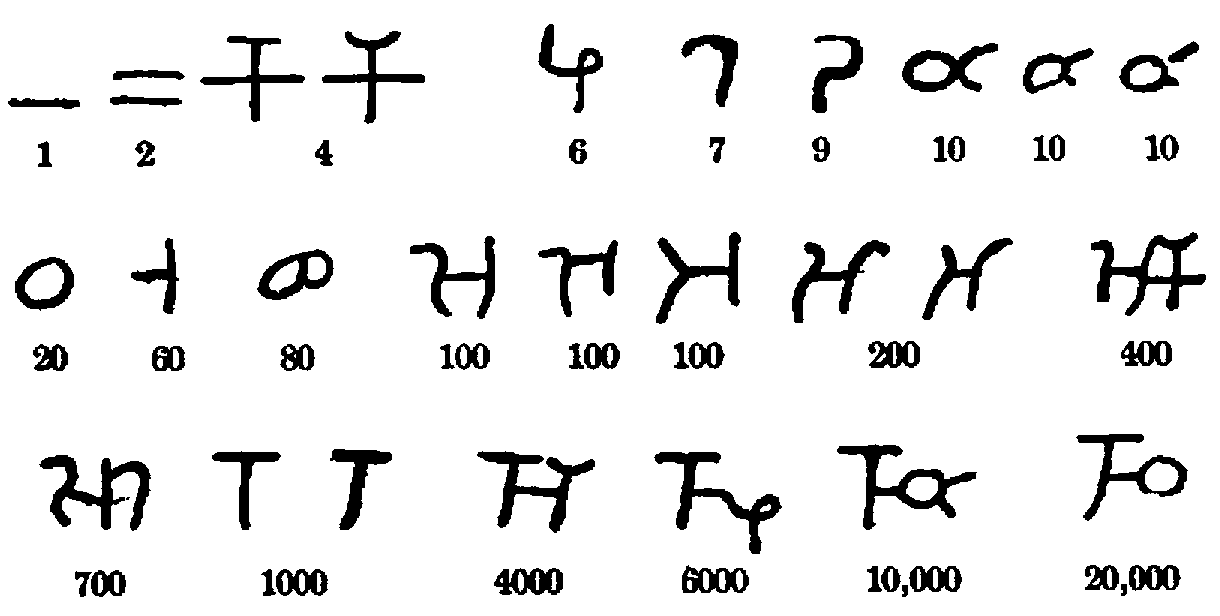
Early notational symbols found in southern India Epic poetry as oral history – ~2000 BCE
Epic poetry used techniques of metrics and rhythm to commit long stories and myths to memory. Bards passed these to many people as they travelled through song. The most famous examples are the Epic of Gilgamesh and The Mahabharata which survived long enough to be written down.

Modern printed version of the Mahabharata epic The socratic method – 500 BCE
Socrates’ classical inquiry method of engaging in cooperative dialogue and responding to everything with a question. Enabled critical thinking and scepticism of every possible assumption and presupposition in an argument.

Monsiaux's painting; 'The Debate of Socrates and Aspasia' The scientific method – 1000~1400 BCE
Another classic. Hypothesis, empirical observation, experiments, and shared cumulative facts fundamentally changed our ability to understand the physical world around us. Allowed us to harness that information in the service of disciplines like engineering and medicine.

Vermeer's 'The Astronomer' Cartesian coordinates – 1637
Rene Descartes’ system of assigning numbers to points on an X - Y - Z axis. Allows us to model and map areas of 3D space using precise measurements. Enabled us to draw up plans for objects and structures that don’t yet exist. Also enabled mapping latitude and longitude points on earth, and eventually GPS

The X, Y, Z axes of the cartesian mapping system Zettelkastens – 1500s
An information management system based around linked index cards. Each card holds a single belief or succinct statement, a unique number or code, and links to its source references and any related cards. The system allows researchers to collect and organise large amounts of information, and create many flexible ‘chains’ of cards to synthesise into original arguments.
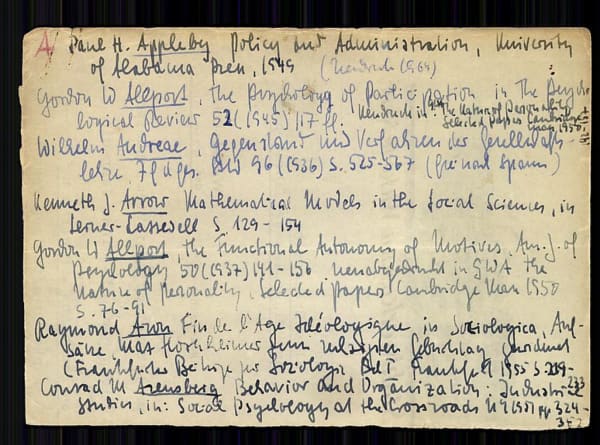
A single index card from Niklas Luhmann's Zettelkasten Aboriginal songlines – ~60,000 years ago
Songlines are physical paths through the Australian landscape that Aboriginal people have used for tens of thousands of years as mnemonic devices. They have songs they sing that correlate to specific paths and encode information about the land, political and social rules, and cultural knowledge. Similar to method of loci , but shown to be more effective in memorising vast quantities of information.

- Spreadsheets
Paper spreadsheets (also called ledgers) were used for accounting; the column and row format allowed bookkeepers to track and calculate large volumes of income, costs, taxes, etc. The power of spreadsheets undeniably exploded when they made the jump to digital mediums, but the base format has been around for hundreds of years.

Data visualisation – 1785
Visuals that map quantitative data onto shapes, lines, colour, and spatial relationships. Allows us to visually compare, contrast, and see patterns in a large amount of data.
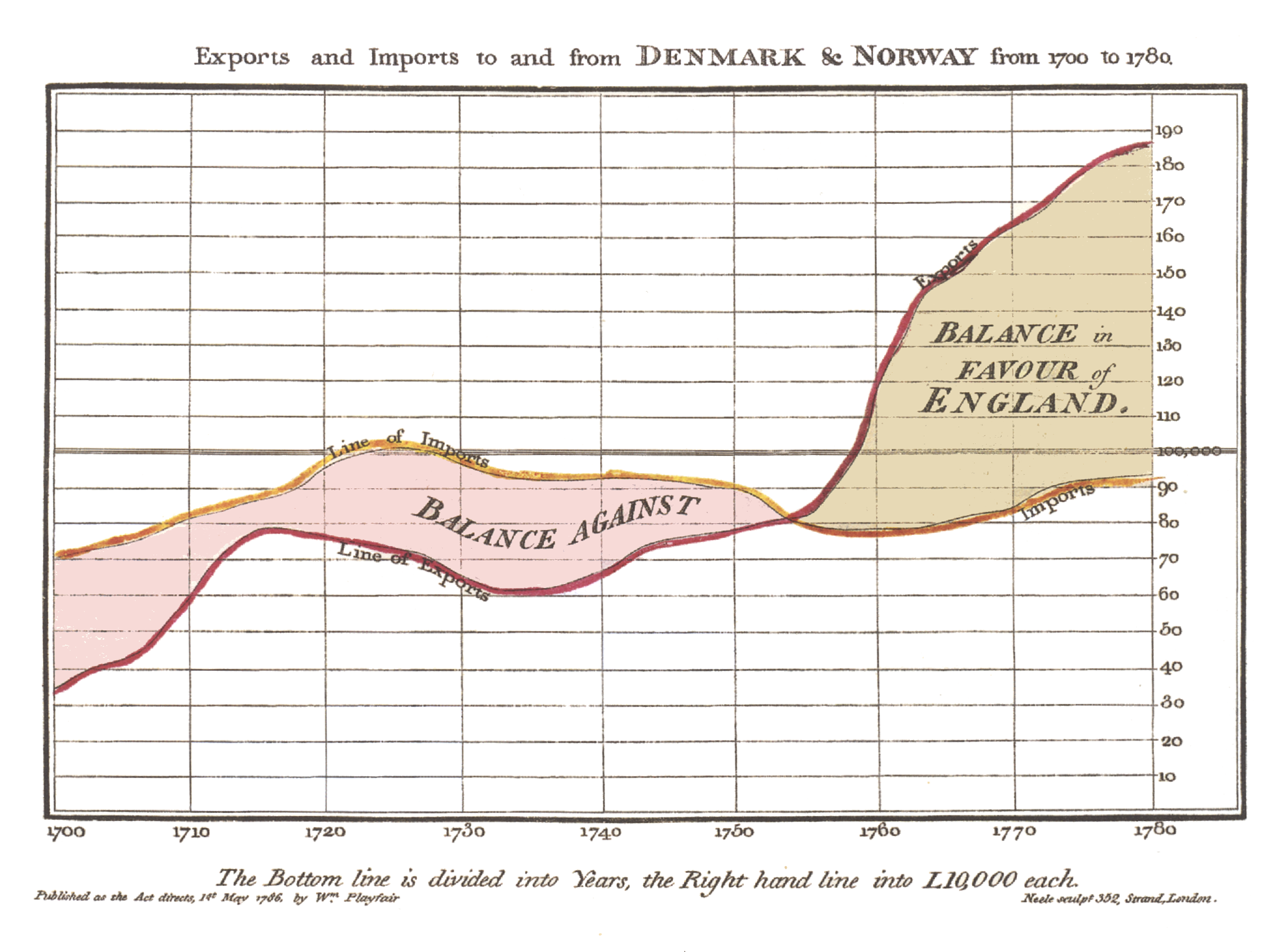
The first data viz; William Playfair's map of the Bank of England's balance over time
Each of these examples profoundly transformed the kinds of thoughts humans can think. They expanded our cognitive abilities and allowed us to solve problems that would otherwise be unsolvable.
It might feel strange to call some of these things “tools”. The scientific and Socratic methods seem more like techniques for problem-solving. While drawing and writing are surely mediums or representations of ideas rather than “tools”?
Part of this discomfort is a limitation of language. “Tool” is a tricky category that we most often associate with physical objects. But we also use it to refer to less tangible techniques and mediums: fire, software development kits, slam poetry, democratic voting systems, design thinking, metaphors, and Google search filters are also called “tools.”
I do think there’s a meaningful distinction between tools and mediums: Mediums are a means of communicating a thought or expressing an idea. Tools are a means of working in a medium. Tools enable specific tasks and workflows within a medium. Cameras are a tool that let people express ideas through photography. Blogs are a tool that lets people express ideas through written language. JavaScript is a tool that let people express ideas through programming. Tools and mediums require each other. This makes lines between them fuzzy. And I’m unconvinced there’s much utility in sharpening them.
I’m going to proceed with a generous definition of “tool” for the rest of this piece. We could spend time splitting hairs and trying to hash out these categories. Or we could plough on by accepting any object, cultural practice, technique, or medium that expands human abilities as a tool. I appreciate lumping these together is a gross philosophical oversimplification, but I can’t dig into it without launching into a thousand-word side quest on Heidegger and McLuhan. We have other things to cover. Forgive the ontological laziness.
This gives us a mental model that looks something like this:

Most of the examples I listed above are cultural practices and techniques. They are primary ways of doing; specific ways of thinking and acting that result in greater cognitive abilities. Ones that people pass down from generation to generation through culture.
Every one of these also pre-dates digital computers by at least a few hundred years, if not thousands or tens of thousands. Given that framing, it’s time to return to the question of how computation, software objects, and note-taking apps fit into this narrative.
The Computational Roots of Tools for Thought
My simple interpretation of “tools for thought” up to this point takes the phrase at face value – devoid of any historical context. Any sincere and holistic exploration of the phrase has to consider who came up with the term, and what particular cultural and historical contexts they were part of.
If you look around at the commonly cited “major thinkers” in this space, you get a list of computer programmers: Kenneth Iverson, J.C.R. Licklider, Vannevar Bush, Alan Kay, Bob Taylor, Douglas Englebart, Seymour Papert, Bret Victor, and Howard Rheingold, among others.
I would be remiss not to point out all of these figures are male, white, from North America, and associated with various prestigious technical universities such as MIT, Caltech, Stanford, and UC Berkley. Most were hanging out in California from the 1960s up through the 1990s working on advances in networked computing, personal computing, and interface design. This demographic is so overwhelmingly consistent that they’re sometimes called the “patriarchs” of tools for thought. In Howard Rheingold’s Tools for Thought (1985)40ya
This is relevant because it means these men share a lot of the same beliefs, values, and context. They know the same sorts of people, learned the same historical stories in school and were taught to see the world in particular kinds of ways. Most of them worked together, or are at most one personal connection away from the next. Tools for thought is a community scene as much as it’s a concept.
This gives tools for thought a distinctly computer-oriented, male, American, middle-class flavour. The term has always been used in relation to a dream that is deeply intertwined with digital machines, white-collar knowledge work, and bold American optimism.
A History of Computational TFT
The phrase itself is not that old. It was first used by Kenneth Iverson in his research work on programming notation throughout the 1950s and ‘60s. Andy Matuschak and Michael Nielsen, (2019)6ya . His first public paper mentioning it is Notation as a Tool for Thought published by the ACM in 197946ya The Association for Computing Machinery; the institutional big wigs of academic computer science .
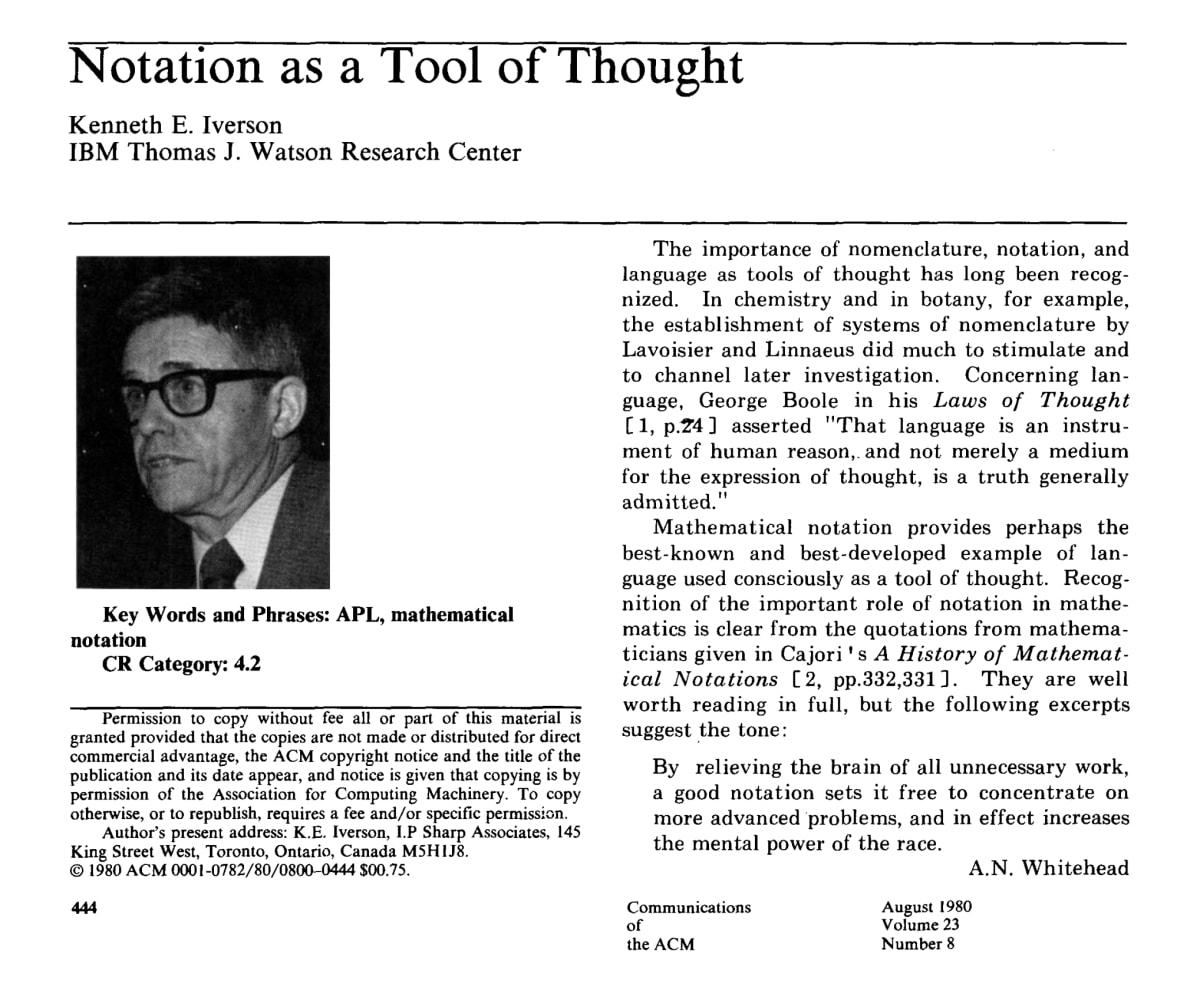
Iverson argued that establishing shared notation within a discipline – be it biological, mathematical, or programmatic – can relieve our working memory and compress complex meanings into concise forms.
Notation is only one small aspect of the larger tools for thought vision. While Iverson was the first to give this philosophy a distinct name, others were already exploring many of the same themes using different terms.
Back in 194580ya Vannevar Bush published an essay titled As We May Think in both The Atlantic and Life Magazine – two publications with a wide readership. In it, he proposed the Memex , an imaginary “memory extension” machine that would help people explore information and craft their own hyperlinked research journeys through it. Many of the later thinkers in the tools for thought movement cite this article as a key influence.
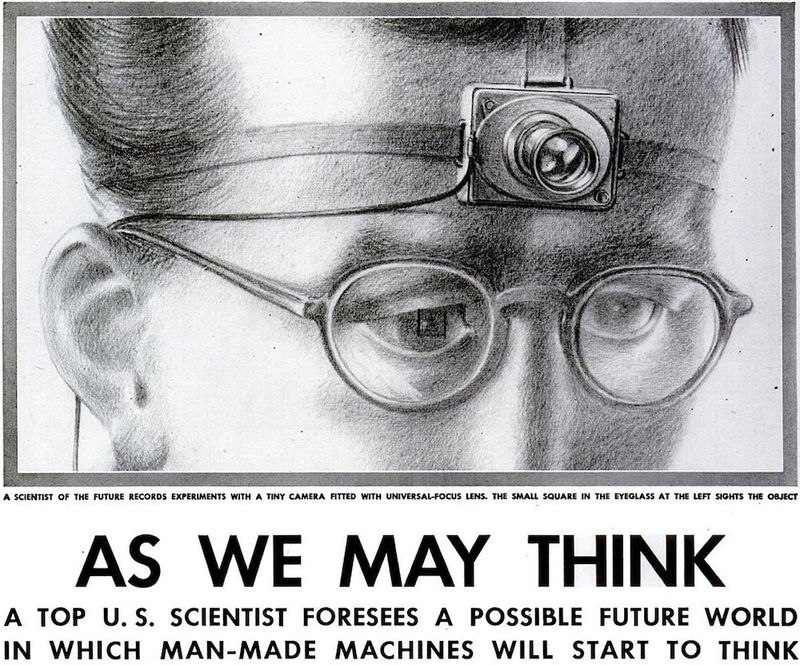
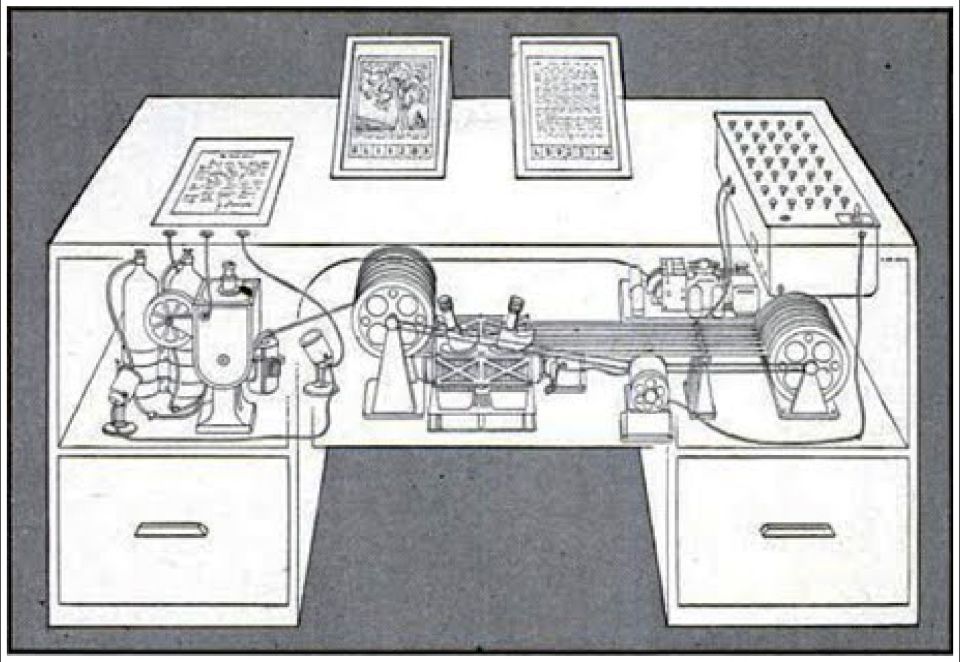
This is one of the earliest visions of how computers might be able to augment human cognitive capacities. Others soon took up the mantle.
J.C.R. Licklider built on Vannevar’s ideas throughout the 1950s and ’60s while teaching at MIT. His 196065ya article Man-Computer Symbiosis predicts a future where “men and computers cooperate in making decisions and controlling complex situations.” Where we would have marvels like “computer-posted wall displays” for critical data, and “automatic human speech production and recognition.”
That all sound quite banal to us now. We have plenty of giant dashboards and voice assistants. Every decision made in complex situations like government, infrastructure engineering, medicine, or law involves extensive (hu)man-computer collaboration and augmentation. We have already achieved many of the wildest dreams of this generation. Computers are deeply integrated into every institution. And every individual life. They are affordable, easily accessible, and always available. Literally in our pockets.
But simply because we’ve drastically improved human-computer collaboration since 196065ya doesn’t mean we’ve peaked. It’s still unclear how much our current status quo helps or hinders our capacity to deal with complex problems. The work of Douglas Engelbart helps shed some light on this. His extensive essay Augmenting Human Intellect (1962)63ya has become another touchstone for the community. It proposes a more ambitious vision for using computers to extend our cognitive abilities.
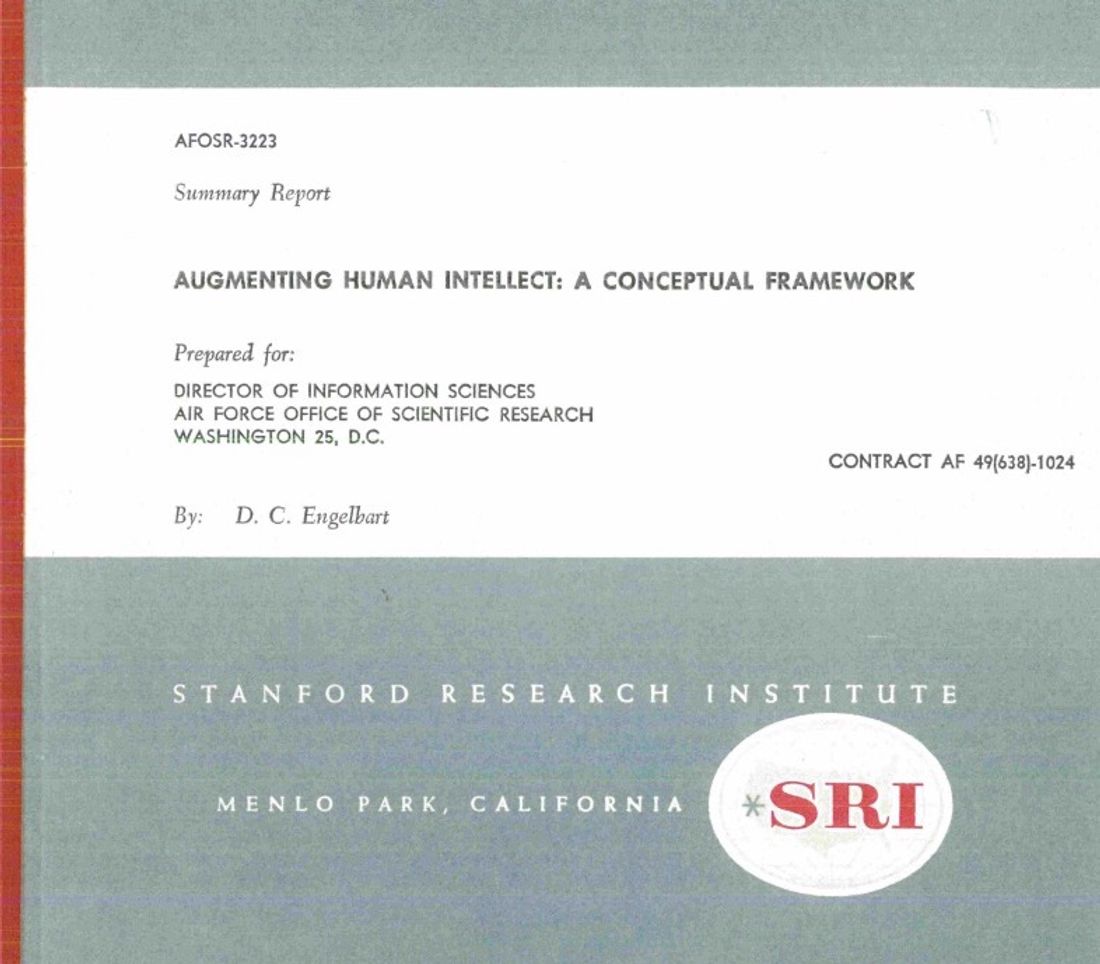

Englebart was specifically concerned with our ability to deal with complex problems, rather than simply “amplifying intelligence.” Being able to win a chess match is perceived as intelligent, but it isn’t helping us tackle systemic racism or inequality. Englebart argued we should instead focus on “augmenting human intellect” in ways that help us find solutions to wicked problems. While he painted visions of how computers could facilitate this, he also pointed to organisational structures, system dynamics, and effective training as part of this puzzle.
After Bush, Licklider, and Englebart’s well-publicised presentations and writing made the rounds, many other thinkers became interested in the problem of expanding human reasoning with machines. Ted Nelson proposed plenty of software patterns for storing, connecting, and organising ideas. Researchers at Xerox PARC like Alan Kay and Bob Taylor developed the foundations of personal computing – graphical interfaces, ethernet, WYSIWYG word-processing, and the desktop metaphor. These inventions changed computers from large, corporate calculation machines into personal devices used in every home and school.
Kay would go on to become one of the leading voices of tools for thought. In essays like “ Personal Dynamic Media ” (1977)48ya and “ User Interface: A Personal View ” (1989)36ya he paints a vision of thinking with computers that go beyond what we’ve achieved so far. In recent years he’s become fond of the line “the personal computing revolution hasn’t happened yet” 1 2 3 – meaning since the initial advances in the ’70s and ’80s, we’ve failed to make significant progress towards real computational tools for thought.
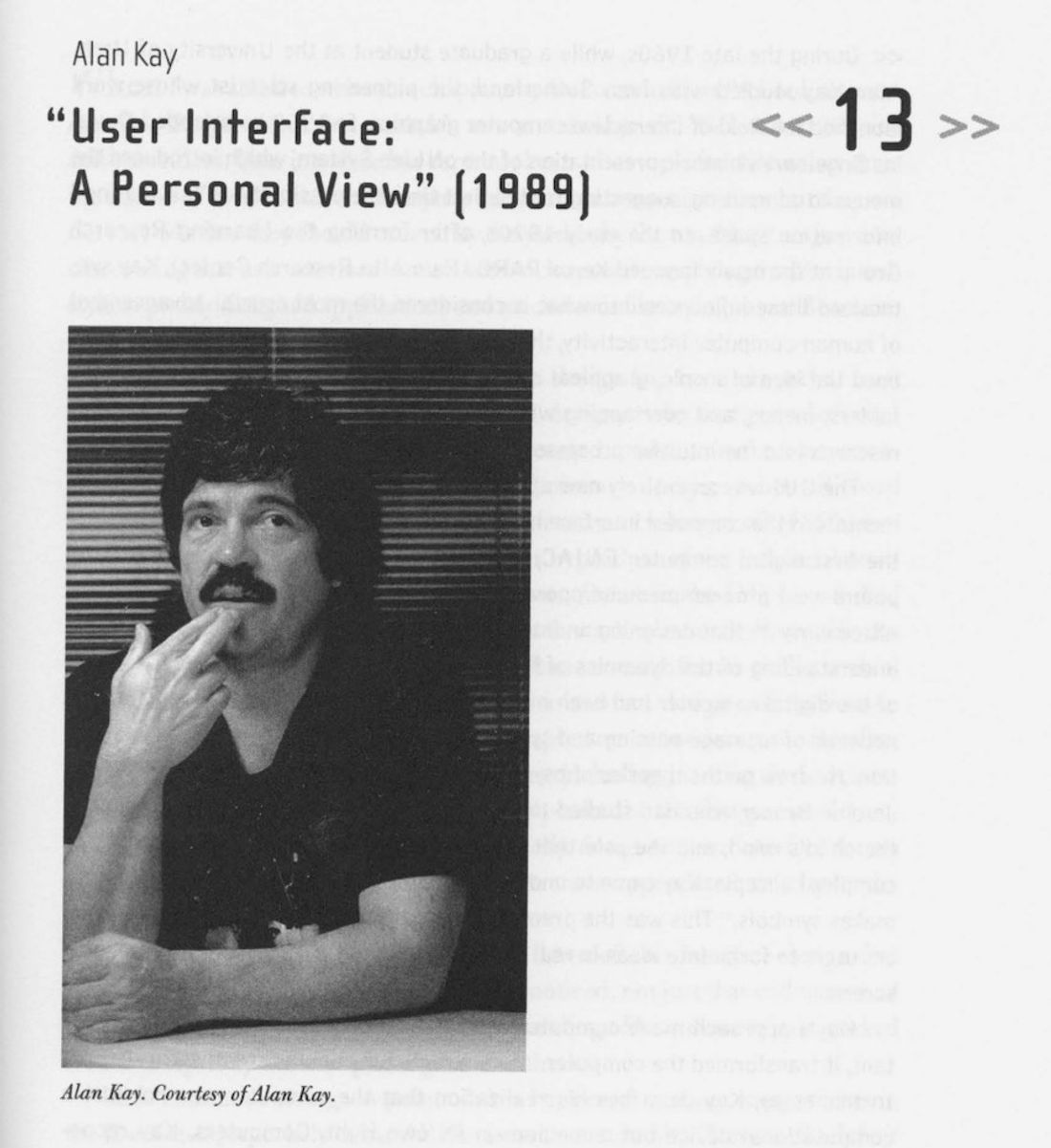
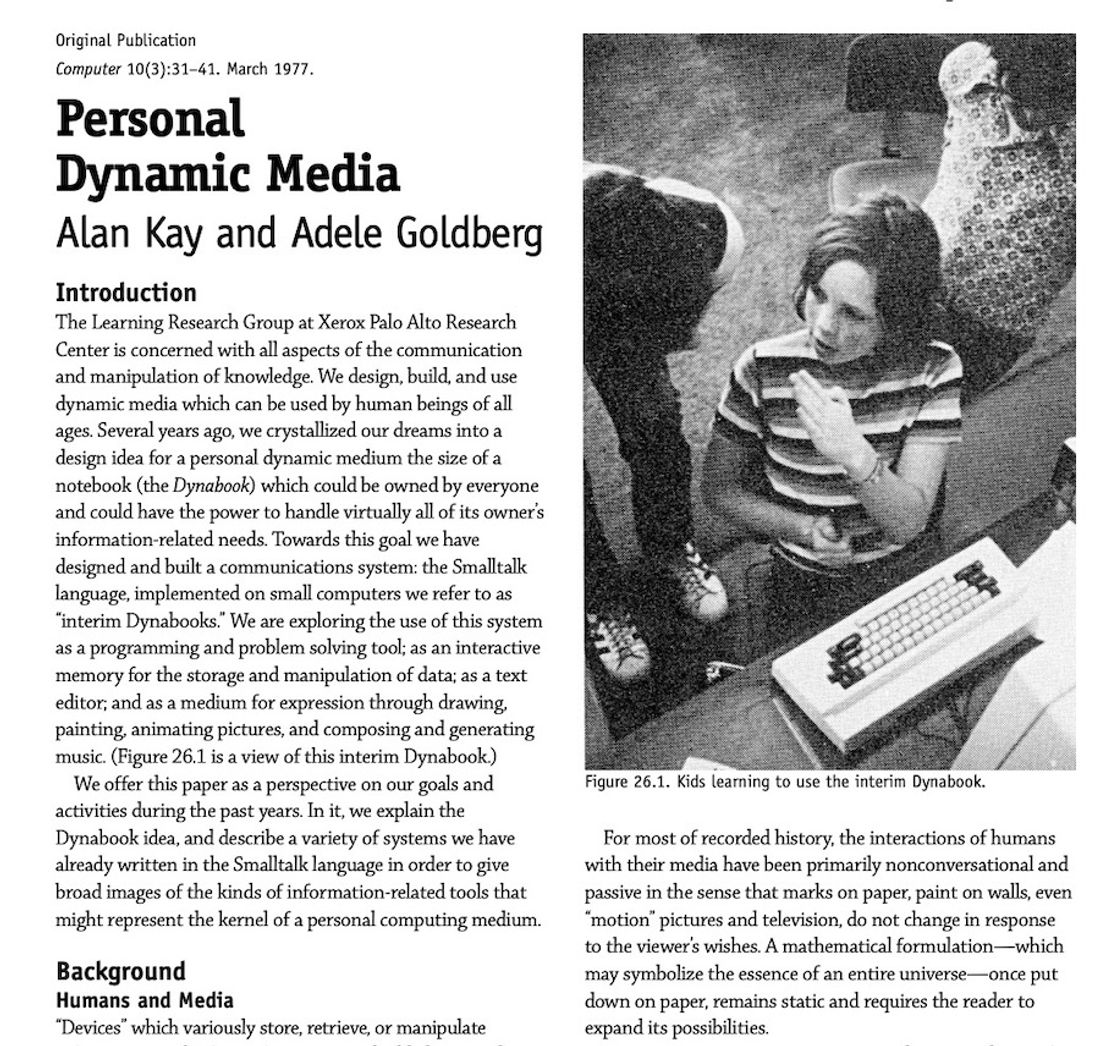
Much of the history I’ve just swept through is covered in Howard Rheingold’s 198540ya book Tools for Thought – an account of major innovations that led to the personal computer and the philosophical lineage of those building it. Michael Hiltzik’s Dealers of Lightning is another good chronicle of the work done at Xerox PARC. There is also an edited collection of key texts in this domain called The New Media Reader that I’ve heard multiple people call “the bible of tools for thought.” You can pick up a used copy for under £5. This is always my top recommendation to people trying to understand what tools for thought is all about
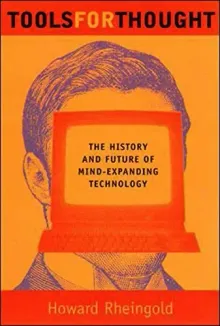
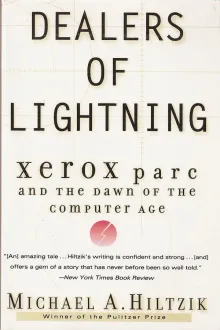
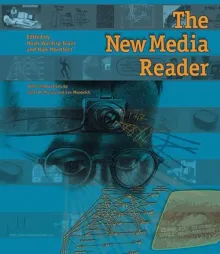
Notice how all of these thinkers exclusively focus on computers as essential to enabling new ways of thinking. They aren’t exploring how meditation, architecture, complementary medicine, or music composition might enable new kinds of thoughts. The computer is vital.
Beyond Computers: Cognitive Scientists and Philosophers on Tools for Thought
There is a rich literature of research and insight into how we might expand human thought that sometimes feels entirely detached from the history we just covered. Cognitive scientists and philosophers have been tackling questions about the relationship between cognition, our tools, and our physical environments for centuries. Well before microprocessors and hypertext showed up. Oddly, they’re rarely cited by the computer scientists.
This alternate intellectual lineage is still asking the question “how can we develop better tools for thinking?” But they don’t presume the answer revolves around computers.
Seven years before Rheingold published his book “Tools for Thought,” another book was published with the same name. In 197748ya , the biologist and philosopher C.H. Waddington released a book exploring the nature of complex systems. He discussed philosophies and problem-solving tools for wicked problems. Computers are mentioned in passing – as one tool among many – but are never the focus.
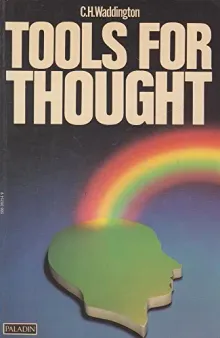
Philosopher Andy Clark has spent his career exploring
how external tools transform and expand human cognition. His 200322ya book
Natural-born Cyborgs
argues humans have “always been cyborgs A History of Cyborgs
Notes on the history of cyborgs and why the idea still holds historical weight in Western narratives .” Not in the sense of embedding wires into our flesh,
but in the sense we enter “into deep and complex relationships with nonbiological constructs, props,
and aids”. Our ability to think with external objects is precisely what makes us intelligent.
Clark argues “the mind” isn’t simply a set of functions within the brain, but a process that happens between our bodies and the physical environment. Intelligence emerges at the intersection of humans and tools.
He expanded on this idea in a follow-on book called Supersizing the Mind . It became known as the extended mind hypothesis . It’s the strong version of theories like embodied cognition , situated cognition , and enacted cognition that are widely accepted in cognitive science departments.
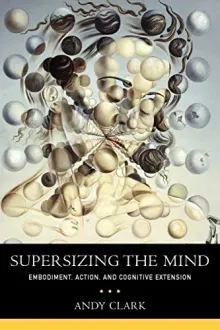
Embodied cognition
The main arguments of embodied cognition are that our thoughts and cognitive processes are influenced by and arise from our bodily experiences and sensorimotor interactions with the world. This view challenges the traditional idea that the mind is a separate, abstract entity that is independent of the body, and instead proposes that the mind is embodied and situated in the physical world. Proponents of embodied cognition argue that our perceptions, concepts, and cognitive processes are shaped by the physical structures of our body and the sensory experiences it provides, and that cognition cannot be fully understood without considering the bodily basis of our experiences.
“it is a mistake to posit a biologically fixed “human nature” with a simple “wrap-around” of tools and culture. For the tools and culture are indeed as much determiners of our nature as products of it. Ours are (by nature) unusually plastic brains whose biologically proper functioning has always involved the recruitment and exploitation of non-biological props and scaffolds” (p23, Natural Born Cyborgs, 2023)
Draft in Progress
The quality of writing below this point is haphazard, disjointed, and nonsensical. It's probably a good idea to come back later.
Barbara Tversky has four decades of research on cognition, embodiment, and visualisation where she repeatedly uses the term. Wife to the late, great Amos Tversky . Famous for his collaboration with Daniel Kahnneman and the development of behavioural economics
The philosopher Daniel Dennett published Intuition Pumps and Other Tools for Thinking in 201312ya
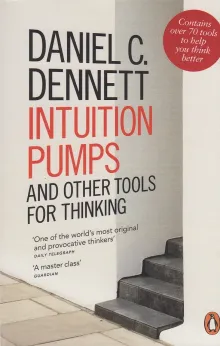
Tim Ingold is both an anthropologist and philosopher who has written numerous books about our relationship to and perception of our physical environment.
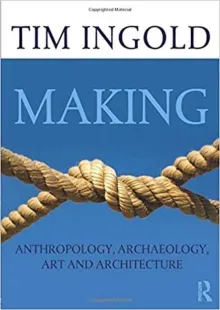
We’ll return to these non-computational interpretations of “tools for thought” later on. They shouldn’t be dismissed or cast as irrelevant to the narratives that computer nerds have written.
Computers as the Meta-medium
Is this particular focus on computers justified?
Alan Turing first called computers “universal reasoning machines” – machines capable of simulating many other kind of machines. General purpose machines expand what is possible. Computers as a meta-medium that can mimic all other kinds of mediums. They mimic paper and pencil, calculators, painting canvases…
Computers can dynamically simulate
“Computers are without a doubt the most potent thinking tools we have, not just because they take the drudgery out of many intellectual tasks, but also because many of the concepts computer scientists have invented are excellent thinking tools in their own right.” - Dennett (2013)12ya
“Although digital computers were originally designed to do arithmetic computation, the ability to simulate the details of any descriptive model means that the computer, viewed as a medium itself, can be all other media if the embedding and viewing methods are sufficiently well provided. Moreover, this new “metamedium” is active—it can respond to queries and experiments—so that the messages may involve the learner in a two-way conversation. This property has never been available before except through the medium of an individual teacher. We think the implications are vast and compelling” - Kay and Goldberg (1977)48ya
“If such a machine were designed in a way that any owner could mold and channel its power to his own needs, then a new kind of medium would have been created: a metamedium, whose content would be a wide range of already-existing and not-yet-invented media.” - Kay and Goldberg (1977)48ya
It would be more accurate to rename tools for thought to computational mediums for thought. Or CMFT for short.
CMFT would actually be a subset of the larger field of tools for thought, since as we established earlier, the vast majority of historical tools for thought are not in the least bit computational.
[image of CMFT as a subset of TFT]
Which should make us pause to ask: Are CMFT’s significantly different to other TFTs?
The Second Wave of Tools for Thought
A major narrative within the tools for thought community is the loss of historical progress. There’s a lot of lamenting the historical break between the early pioneers of personal computing and the current state of computing. The nineties and early oughts are cast as the fallow times. While software “ ate the world ,” millions came online, and Windows 95 graced every desktop, this period is seen as a turn away from the original vision.
Bret Victor was the first to call attention to this historical gap in a series of talks between 2013 to 2015.
Andy Matuschak and Michael Nielsen ’s 20196ya essay on transformative tools for thought helped kick off the new popularity wave, as well as Andy’s continued research and writing advocating for TFT as a field.

Matuschak and Nielsen’s essay made a dent in the software development community.
Rise of the Note-takers
Around the end of 20196ya , as Matuschak and Nielsen’s essay is being passed around, we begin to see the rise of a few new “note-taking” apps. I put “note-taking” in quotations because the activity we’re going to talk about here is only tangentially about taking notes, but we’ve all taken to using the idea of note-taking as a shorthand way to refer to it.
What we are talking about is software that allows people to enagage in a few key activities:
- Write in a linear text format
- Collect information
- Store information
- Search and find information
- Connect information
Before this moment, the major players in the market are tools like Evernote, OneNote, Notion, and Apple Notes. There are plenty of smaller apps serving niche use cases. But there’s a clear inflection point in mid-2020 in this field where the number and diversity of “note-taking” applications drastically increases. [need evidence for this claim]
Roam Research is one of the central software characters in this story. In late 2019 and early 2020 the beta version gains a slew of new users For transparency I should state I started using Roam as my primary knowledge base in November of 20196ya so my understanding of this history is certainly coloured by that affiliation.
Obsidian comes out in xxxx. Logseq is released in xxxx. At this point it seems the floodgates are open.
In short order, we get Clover, Craft, Remnote, Mem.ai, Scrintal, Heptabase, Reflect, Muse, Thunknotes, Kosmik, Fermat, and XXX.
There’s a scramble to make sense of all these new releases and the differences between them. YouTube and Medium explode with DIY guides, walkthrough tours, and comparison videos. The productivity and knowledge management influencer is born.
[ giant wall of productivity youtube nonsense ]
The strange thing is, many of these guides are only superficially about the application they’re presented in. Most are teaching specific cultural techniques:
Zettelkasten, spaced repetition, critical thinking.
These techniques are only focused on a narrow band of human activity. Specifically, activity that white-collar knowledge workers engage in.
I previously suggested we should rename TFT to CMFT (computational mediums for thought), but that doesn’t go far enough. If we’re being honest about our current interpretation of TFT’s, we should actually rename it to CMFWCKW – computational mediums for white-collar knowledge work.
Thinking Beyond Note-taking Software
By now it should be clear that this question of developing better tools for thought can and should cover a much wider scope than developing novel note-taking software.
- Forecasting and prediction markets
- Guesstimate
- Squiggle
- Metaculus
- Better critical reasoning
- Socratic debate
- Audio and visual
- Photoshop
- MaxMSP
- Logic Pro
- Jacob Collier streams
- Game dev and dynamics
- Houdini
- Blueprint
- ML Assistants
- Elicit for rigorous research
- Spatial understanding
- Nothing that teaches the Alexander technique, movement, spatial awareness, dance
- Argonauts of the Western Pacific
- Remembrances of Times East